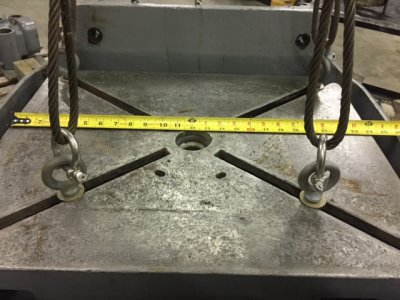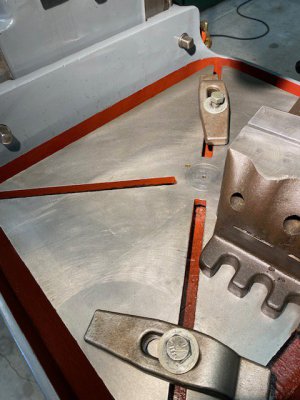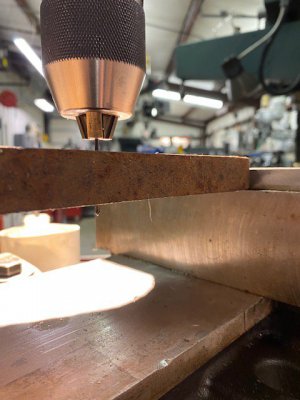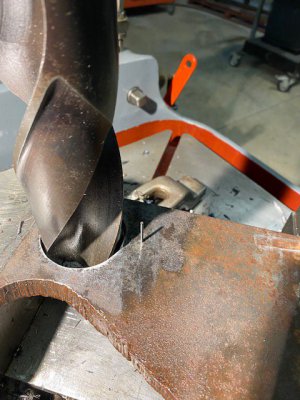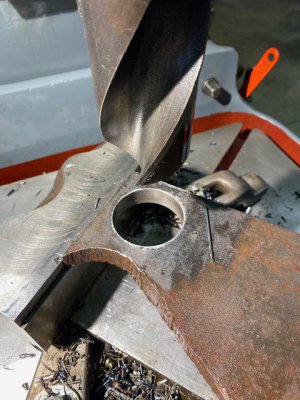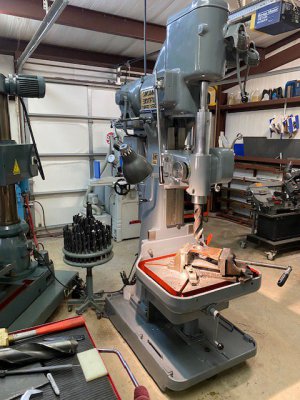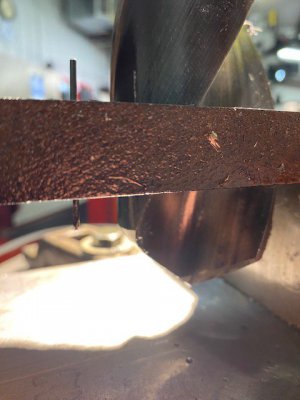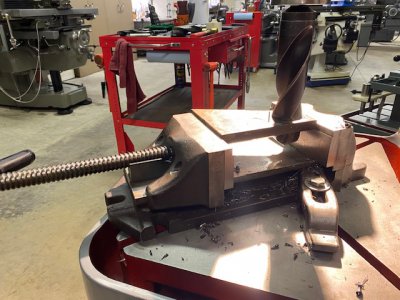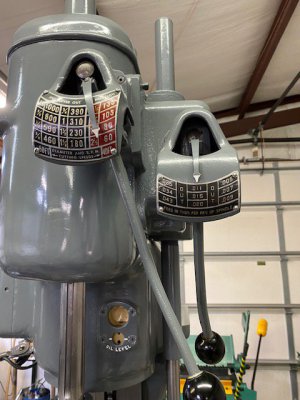I’m adding a few more pictures of the drill and the explanation of some aspects of how the drill works that some may not be aware of.
There are pictures of the lead counterweights inside the column. The upper one weighs a couple hundred pounds or more. This is the counterweight for the sliding head. The counterweight below this and hanging from a rod that goes through the upper weight is the counterweight for the quill. I remember when I had the machine the apart for refurbishing and was replacing its spindle bearings, the quill and spindle together were heavier than one person could lift comfortably – hence the need for counterweights.
Originally the machine would have had additional counterweights that could be added or subtracted depending on the weight of the tooling. Some of the large bits are quite heavy. I used an old barbell set that I cut slots in that I can use to quickly add or subtract weight as needed - although it isn’t needed all that often.
I wanted to reface the table. The problem was that the table is pretty good size and weighs about 650 pounds. The only way I could come up with doing it in my shop was putting it on a horizontal mill with the table face vertically facing the mill spindle. I used a 1” boring head mounted on a 50 taper arbor. I used a 5” long 1” boring bar as a large fly cutter. It was a little unorthodox, but I was pleased with the results.
I also made a couple of covers for the base of what would have been the coolant tank which I now use to store drill bits in. I’m always looking for a place to stash drill bits.
As a side story, I found three large boxes of drill bits ranging in size of MT 3 to MT 5 at a Hoff auction. At the time I was deep in the middle of the 10EE restoration. I won the bid to my surprise, but because of my distraction with the 10EE I didn’t take into full account what such a large number of these drill bits would actually weigh. Shipping ended up costing me more than the drill bits. It did end up being a good deal and ultimately I was glad I did it – but learned to pay more attention.
Bottom quill weight
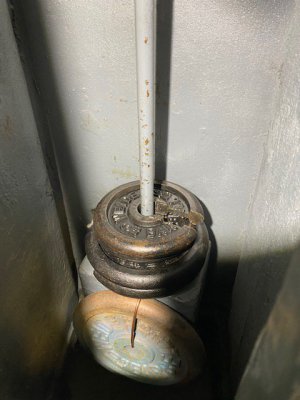
The upper counterweight for the head. The bolt you see locks the counterweights for transit.
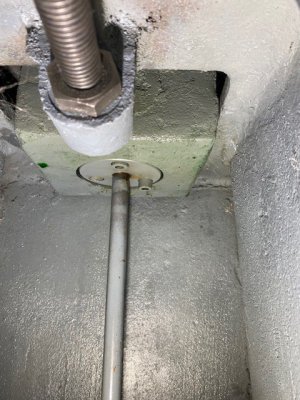
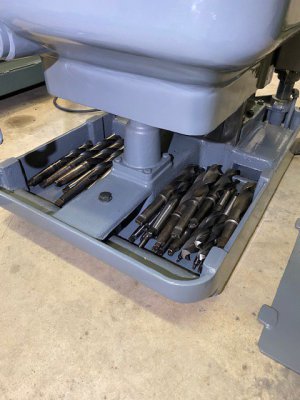
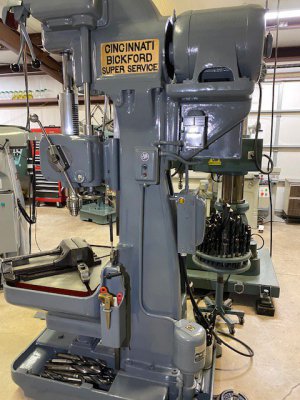
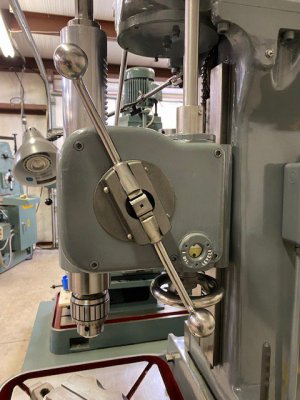
The motor is 5 hp, 1,175 RPM and weighs over 300 lbs.
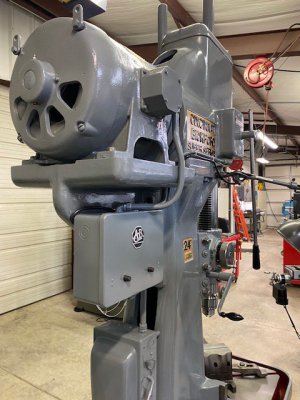
A picture of the before and after of the refaced table.
